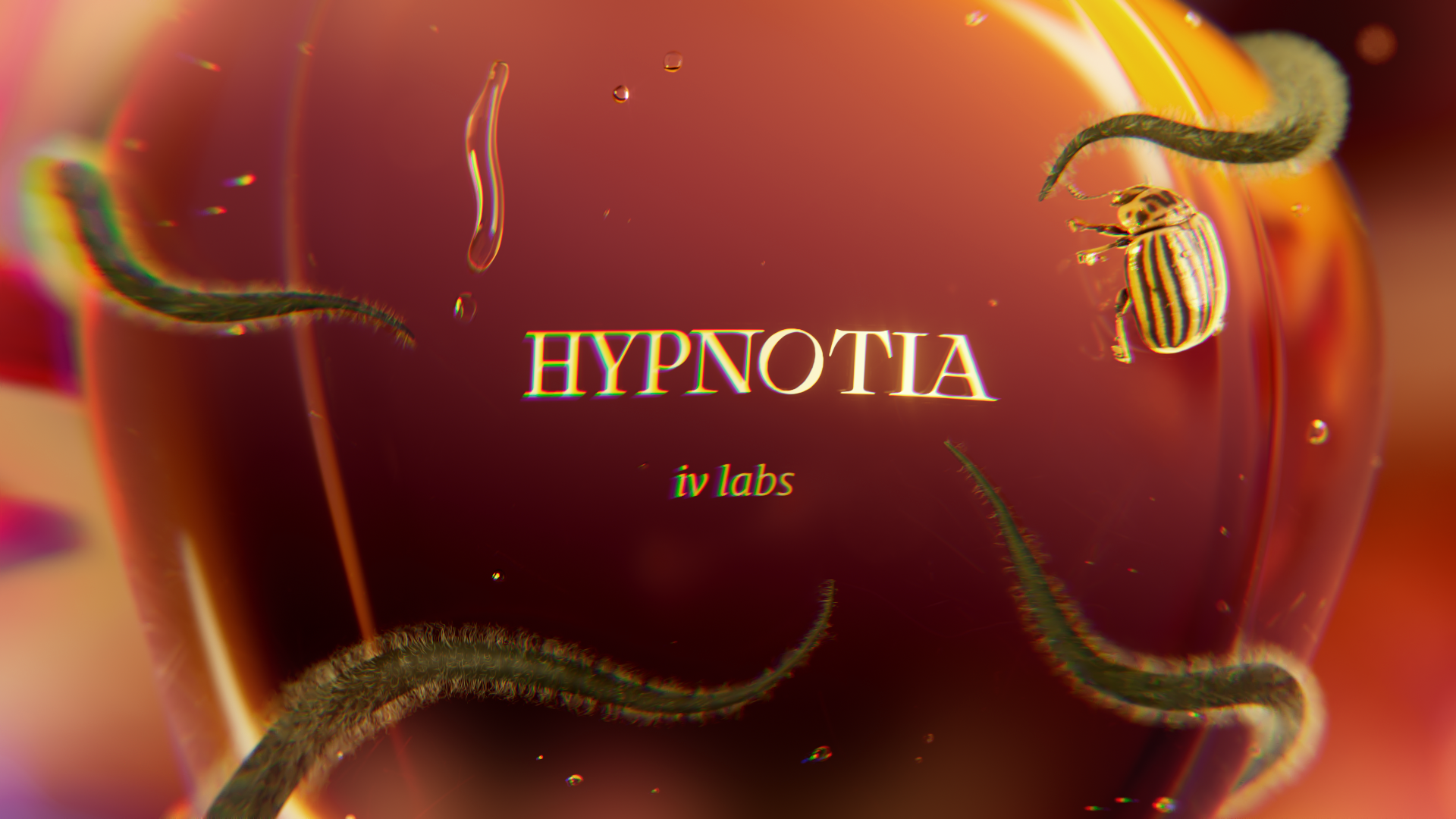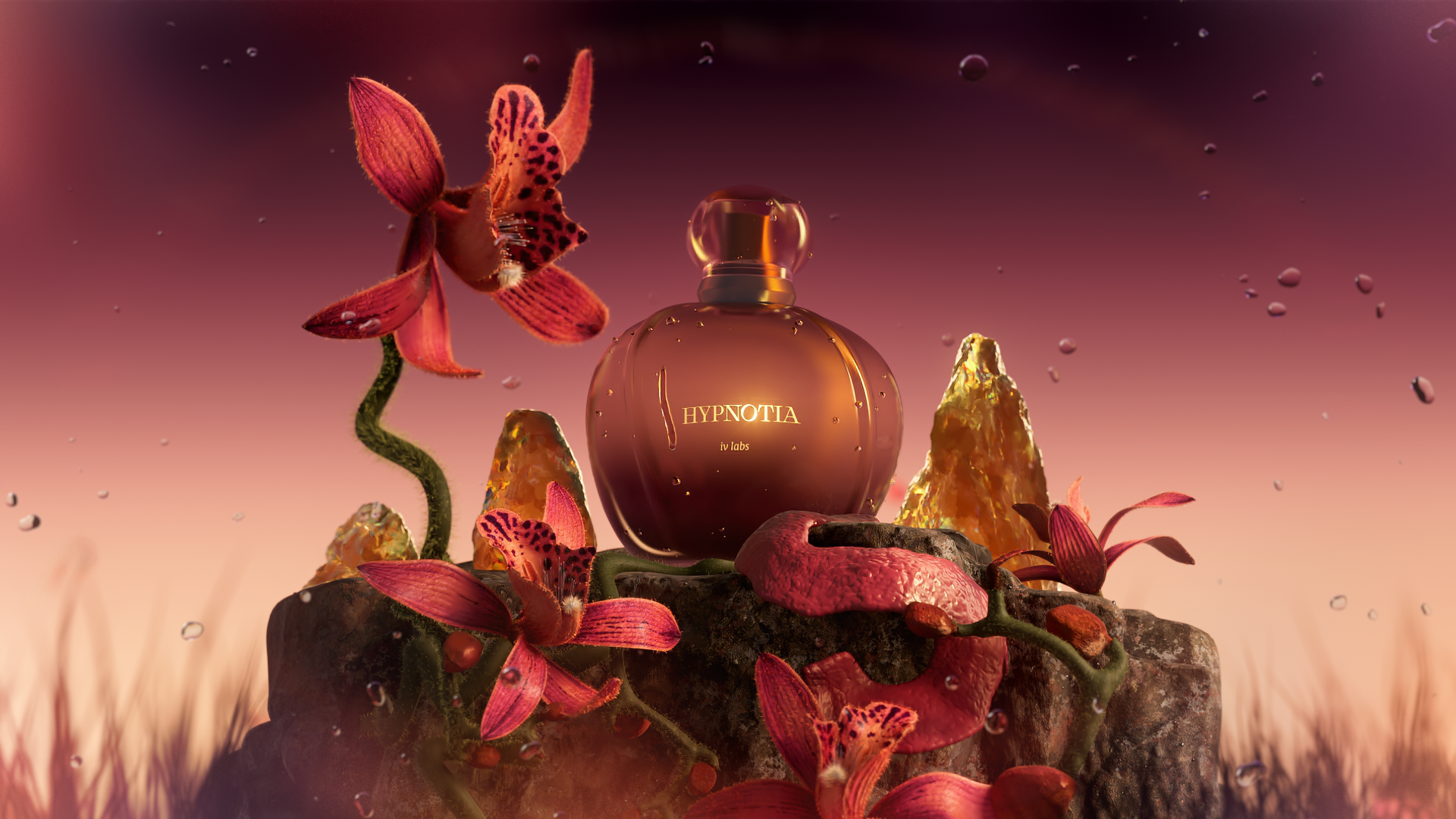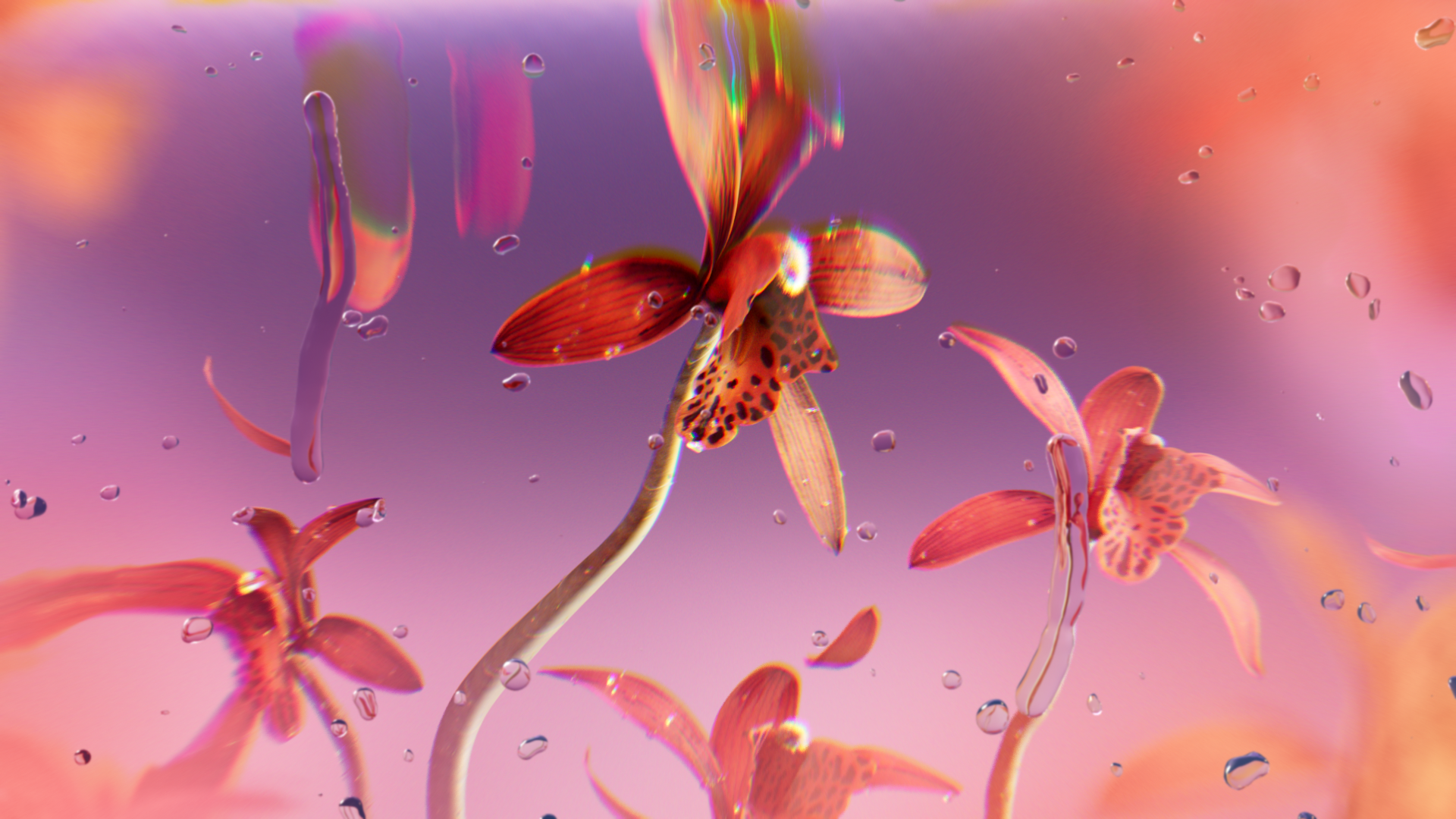Hypnotia: Project and Case Study





R&D - Initial Styleframes


Breakdown of Last Shot
Flower Rigging and IK Dynamics - Timelapse
Role: Director & CG Artist
Tools: C4D, Redshift, AE, PS
Hypnotia is a conceptual mood film created for a speculative fragrance.
At its core lies a key ingredient: an alluring yet toxic bloom scientifically known as Orchidae Hypnoxia. When first discovered in the expanse of the Zyphora Desert, this flower caused vivid hallucinations and, in some cases, temporary blindness. IV Labs perfected a method to neutralize the toxic properties, distilling its essence into a wearable fragrance.
The film uses visual symbolism, movement, and sound to express an emotional character, exploring the tension between allure and danger.
The idea was born from a fascination with how scent can bypass reason to trigger visceral responses. This is embodied by the flower, which blurs perception and captivates instinctively.
Treatment
The visual approach for Hypnotia aimed to reflect the fragrance's dual nature through surreal and cinematographic imagery. Elements float in abstract space, with transitions enhanced by light leaks and distortions to mimic a psychedelic experience. The use of heavy blur, depth of field, and flowing petal-like frames also aim to enhance that mood.
Animation further explores this: green plant tendrils wrap the perfume bottle with intention, mimicking a snake-like movement, symbolically hinting at danger and transformation; the camera drifts with a loose cadence.
Sound
I collaborated with studio Sound Canvas to create a soundscape that felt suspenseful, weird, intense and playful.
The goal was to reflect the flowers' hallucinogenic qualities in a metaphorical way, using sound to suggest a chemical transformation unfolding in the mind. I wanted to combine richly textural, organic foley with electronic music elements and distortions.
I guided the process with references to mood, musical dynamics, and more direct suggestions such as the use of a harmonic minor key to show tension. Simultaneously, I encouraged the studio’s own interpretation and creative input, making it a collaborative process throughout.
R&D
I began the process by exploring several possible visual directions. Through R&D and iterative experimentation, I developed a series of style frames that helped define the project’s final look and informed the storyboard.
A number of color tests were made before arriving at the final palette. The dominant use of red was a deliberate choice, for its visual impact and its subconscious and cultural associations, as in many cultures it’s linked to desire and toxicity.
Technical Approach & Challenges
I used Cinema 4D for designing style frames and animation, with rendering handled in Redshift. Compositing and post were completed in After Effects.
Throughout production, a key priority was maintaining creative control without compromising render performance.
To speed up preview times, I used lightweight proxy versions of the flowers as a placeholders. The flower bloom was driven by a rig that combined IK dynamics and cached simulation, using soft body dynamics, fields and forces to create a controlled organic movement.
A few technical challenges had to be addressed to balance visual quality, flexibility in post, and render time efficiency. For example, to simulate water droplets on the virtual lens while keeping preview and render times manageable, I developed a custom solution using a cloner with drops on a plane. I rendered a pass of the shot without the drops first, and in a new file placed it on a plane as an animated sequence. Still and sliding drops were placed on another anterior plane, and rendered with a puzzle matte pass, giving full control in compositing.
Credits
3D direction and animation: Alice Aires
Sound: Sound Canvas
Font: Leonhard Laupichler
Flower model by 3D Molier
Special Thanks: Andrea Marshall

